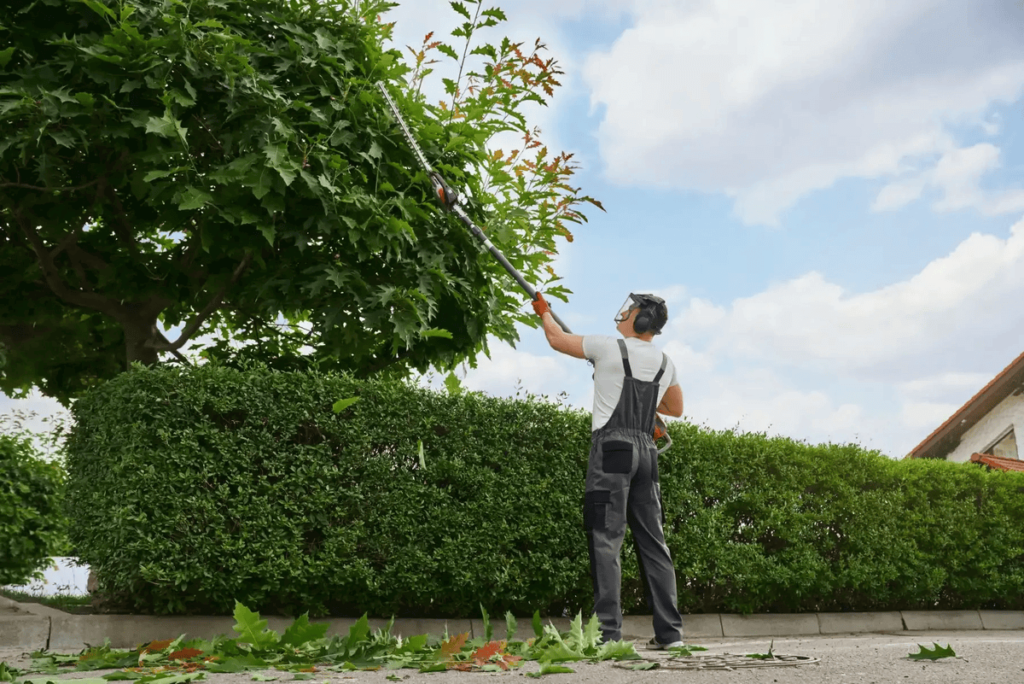Tree trimming, also known as pruning, plays a vital role in maintaining the health, safety, and aesthetics of trees. While trees naturally grow in forests without human intervention, those in urban or residential areas require regular attention. Without proper trimming, trees can become hazards, lose their natural beauty, or even compromise their longevity. This article will explore the reasons why trees need regular trimming, the benefits it offers, and how it impacts both the tree and its surrounding environment.
Health and Growth of the Tree
One of the primary reasons trees need regular trimming is to promote healthy growth. Trees, like other living organisms, can suffer from diseases, pests, and structural issues. Dead or dying branches, if left unattended, can weaken the tree and make it more susceptible to these problems. By trimming away diseased or damaged branches, tree owners can prevent the spread of disease and pests to the rest of the tree.
Additionally, removing overgrown branches allows more sunlight to reach the inner parts of the tree, improving photosynthesis and promoting better overall growth. This increased sunlight also encourages new growth and strengthens the tree’s structure.
Safety Concerns
Overgrown or damaged trees can pose significant safety risks. Low-hanging or weakened branches, caused by disease or storms, can fall and threaten nearby property, vehicles, or pedestrians. Overgrown trees can also interfere with power lines, leading to electrical hazards or power outages.
Regular tree trimming minimizes these risks by removing hazardous branches before they cause harm. This is particularly important in areas prone to strong winds, heavy snowfall, or storms, where the added weight and force can cause weak branches to snap.
Improves Aesthetic Appeal
Trees can greatly enhance the beauty of a landscape, but without regular maintenance, they can become overgrown, misshapen, and unsightly. Regular trimming helps maintain a tree’s natural shape and ensures it remains an attractive feature in the garden or yard. Shaping the tree not only makes it more visually appealing but also helps it blend harmoniously with other landscaping elements.
Moreover, trimming can enhance flowering and fruiting in certain types of trees, making them even more attractive and valuable. Fruit trees, for example, often benefit from pruning as it encourages better fruit production and reduces the risk of disease spreading to the fruit.
Promotes Air Circulation and Sunlight Penetration
Dense, overgrown trees can block the circulation of air and limit the amount of sunlight that reaches the inner branches and the ground below. This can lead to the development of damp conditions that are conducive to fungal growth, mold, and other diseases. By trimming away excess branches, you can improve air circulation, allowing the tree to “breathe” and reducing the chances of moisture-related diseases.
Sunlight penetration is also essential for the health of other plants growing beneath or near the tree. Properly trimmed trees allow for an even distribution of light, which benefits the overall health of your landscape.
Prevents Overcrowding
Trees that are left to grow unchecked can become overcrowded. When too many branches compete for sunlight, water, and nutrients, it can weaken the tree and slow its growth. This can also result in branches that cross or rub against each other, causing damage and creating entry points for pests and diseases.
Regular trimming prevents overcrowding by removing unnecessary or excess branches. This not only allows the remaining branches to thrive but also helps improve the tree’s structural integrity by ensuring a balanced distribution of weight.
Extends the Lifespan of the Tree
Properly maintained trees can live much longer than those that are neglected. Trimming encourages strong, healthy growth, reduces the risk of disease, and eliminates potential hazards that could otherwise shorten a tree’s lifespan. In some cases, regular pruning can prevent the need for more drastic measures like tree removal.
By addressing small issues through trimming, you can prevent larger problems from developing, allowing your tree to grow stronger and live longer. Older trees especially benefit from this, as they may be more susceptible to diseases and environmental stress.
Enhances Property Value
Well-maintained trees can significantly increase the value of a property. Trees add beauty, shade, and a sense of privacy to a home, making it more appealing to potential buyers. On the other hand, overgrown, neglected trees can detract from the overall appearance of a property and even cause issues that could lead to costly repairs.
Regular trimming ensures that trees remain an asset rather than a liability. It demonstrates that the property is well cared for and can contribute to a higher resale value.
Prepares Trees for Changing Seasons
Seasonal changes can have a profound impact on trees, and regular trimming helps them adapt to these changes. For instance, before winter, it’s important to trim trees to remove weak or dead branches that may break under the weight of snow or ice. In the spring, trimming can encourage new growth and help the tree recover from any damage sustained during the colder months.
Different trees require trimming at different times of the year, depending on their species and growth patterns. A knowledgeable arborist can advise you on the best time to trim your trees to ensure they are prepared for seasonal changes.
Environmental and Ecological Benefits
Regular trimming not only benefits the tree but also has positive effects on the surrounding environment. By promoting healthy growth, trimmed trees can provide better habitat for birds, insects, and other wildlife. Additionally, well-maintained trees can improve air quality by absorbing more carbon dioxide and releasing oxygen.
Trees also play a crucial role in reducing the urban heat island effect by providing shade and cooling the surrounding area. By keeping trees healthy and well-trimmed, you can help mitigate the effects of climate change and contribute to a healthier environment.
Prevents Storm Damage
Storms can cause significant damage to trees, particularly if they are not properly maintained. Overgrown branches are more likely to break during strong winds, causing damage to the tree and its surroundings. By regularly trimming your trees, you can reduce the risk of storm damage and ensure that the tree remains sturdy and resilient.
In areas prone to hurricanes, tornadoes, or other severe weather events, trimming trees before the storm season can prevent costly damage to property and help protect the tree from being completely uprooted.
Conclusion
Regular tree trimming is essential for maintaining the health, safety, and beauty of trees in both residential and urban settings. By promoting healthy growth, preventing disease, and reducing safety risks, trimming ensures that trees remain a valuable asset to your property. In addition to improving aesthetics, it also helps protect the surrounding environment, enhances property value, and extends the lifespan of trees.




